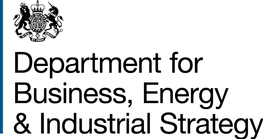Definition of Terms Used Within the DDC Pages
Glossary U-V
Glossary of acronyms and specialised terms on the IPCC-DDC website.
The definitions shown here are from the IPCC Fifth Assessment Report (AR5) working group glossaries: WGI, WGII and WGIII. The source working group is indicated on each definition.
A | B | C | D | E | F-G | H-I | J-K | L-M | N-O | P-Q | R | S | T | U-V | W-Z
UN
UNEP
United Nations Environment Programme
United Nations Framework Convention on Climate Change (UNFCCC)
The Convention was adopted on 9 May 1992 in New York and signed at the 1992 Earth Summit in Rio de Janeiro by more than 150 countries and the European Community. Its ultimate objective is the 'stabilisation of greenhouse gas concentrations in the atmosphere at a level that would prevent dangerous anthropogenic interference with the climate system'. It contains commitments for all Parties. Under the Convention, Parties included in Annex I (all OECD countries and countries with economies in transition) aim to return greenhouse gas (GHG) emissions not controlled by the Montreal Protocol to 1990 levels by the year 2000. The convention entered in force in March 1994. In 1997, the UNFCCC adopted the Kyoto Protocol. WGI
UV
Ultraviolet
Volatile Organic Compounds (VOCs)
Important class of organic chemical air pollutants that are volatile at ambient aire conditions. Other terms used to represent VOCs are hydrocarbons (HCs), reactive organic gases (ROGs) and non-methane volatile organic compounds (NMVOCs). NMVOCs are major contributors - together with nitrogen oxides (NOx), and carbon monoxide (CO) - to the formation of photochemical oxidants such as ozone (O3). WGIII
Vulnerability
The propensity or predisposition to be adversely affected. Vulnerability encompasses a variety of concepts including sensitivity or susceptibility to harm and lack of capacity to cope and adapt. WGII
 "
"




